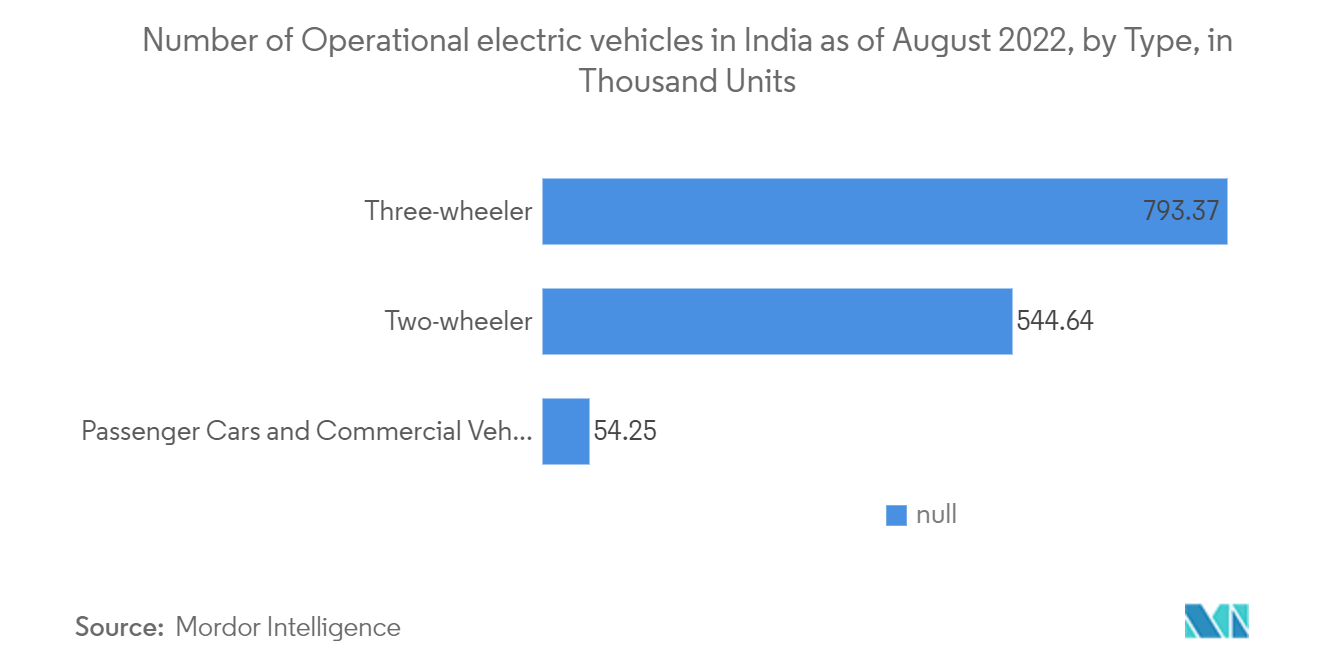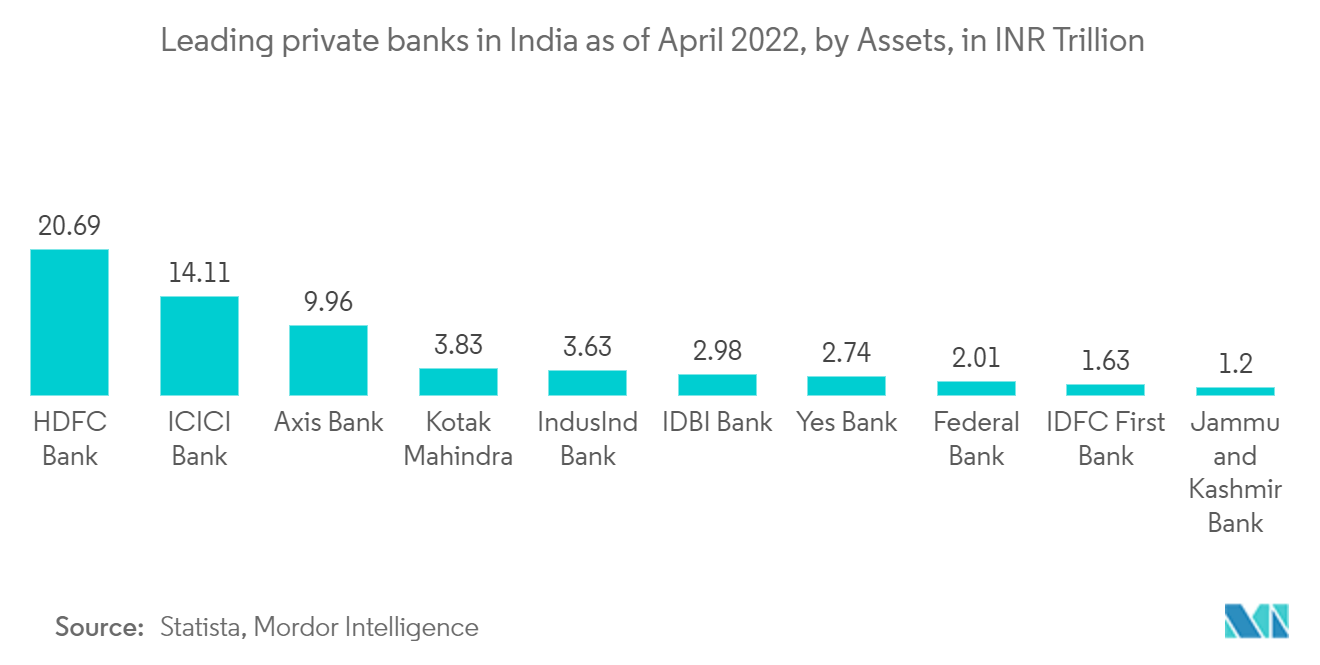Market Trends of India Electric Vehicle Financing Industry
This section covers the major market trends shaping the India Electric Vehicle Financing Market according to our research experts:
Rising Penetration of Electric Vehicles in India to Spur Market Growth
The COVID-19 pandemic severely crippled the auto industry, and the disruption had an impact on demand for electric vehicles. Several government initiatives with a focus on improving the electric vehicle adoption rate in the country are expected to encourage people to opt for electric vehicles, simultaneously contributing to the EV financing market in India. However, electric passenger vehicle sales are less than one percent of total passenger vehicle sales in India. There is a strong inclination toward electric vehicles in the market. For instance,
- According to SMEV, the electric passenger car sales (April 2021 - September 2021) stood at 6,261 units and surpassed EV sales of the previous financial year (April 2020 - September 2020) of 5,905 u. The sales of electric two-wheelers (E2Ws) in the country jumped over two-fold at 2,33,971 units, driven by good traction of high-speed scooters as compared to 1,00,736 units in 2020.
The government of India has undertaken multiple initiatives to promote the manufacturing and adoption of electric vehicles in India, to reduce emissions pertaining to international conventions, and to develop e-mobility in the wake of rapid urbanization.
- The NEMMP, FAME I, and II helped create the initial interest and exposure to electric mobility. In phase two of FAME, the government announced an outlay of USD 1.4 billion through 2022. This phase focuses on the electrification of public and shared transportation through subsidizing 7090 e-buses, 500,000 electric three-wheelers, 550,000 electric passenger vehicles, and 1,000,000 electric two-wheelers.
Several states, like Delhi, Kerala, Karnataka, Telangana, and Andhra Pradesh, have formulated their own electric vehicle policies, while others are in the process of doing so. For instance,
- According to the Delhi Electric Vehicle Policy 2020, the government plans to have at least 50% e-buses for all new stage carriage buses and aims for 25% of the new vehicles to be electric by 2024. In March 2021, the Delhi government announced its plans to introduce an interest subvention of up to 5% for electric vehicle (EV) purchases in the state.
- Telangana has set electric vehicle sales targets for 2025. The targets include the electrification of 80% 2- and 3-wheelers (motorcycles, scooters, and auto-rickshaws), 70% commercial cars (ride-hailing companies, such as Ola and Uber), 40% buses, 30% private cars, and 15% electrification of all vehicles.
Such developments in the market are anticipated to bolster the electric vehicle industry in India, creating an optimistic outlook for EV financing in the near future.

Rising Availability of Electric Vehicle Financing Options in the Country
Over recent years, auto loans for electric vehicles are playing a significant role in retail lending in India. As the economy bounces back following the pandemic, consumers are expressing an increasing affinity toward personal mobility. They are inclined to adopt personal vehicles, especially two-wheelers and passenger cars, as consumers are encouraged by several financing options available in the country, especially for electric vehicles.
The State Bank of India (SBI), HDFC, ICICI bank, and Union bank announced their plans to improve EV financing offerings and other plans to stabilize their position for the same. On the other hand, other mainstream banks, such as Yes Bank and Axis Bank, tied up with vehicle manufacturers to provide affordable EMIs for EVs. For instance,
- In July 2022, Tata Motors teamed up with Axis Bank to provide an exclusively electric vehicle dealer financing solution to its authorized passenger EV dealers. This scheme allows dealers to obtain inventory financing above and beyond their ICE finance limit at attractive rates based on repo-indexed lending rates (RLLRs). The repayment period will be between 60 and 75 days.
Further, NBFCs in the EV financing space in India operate under either a captive or non-captive model. Captive NBFCs such as Manappuram, Vedika Credit Capital, Cholamandalam, and Greaves Finance have partnered with vehicle manufacturers to provide their consumers with affordable financing. Alternatively, non-captive NBFCs, such as Three Wheels United, Redfin, and Autovert, work toward financing particular vehicle segments. For instance,
- In August 2021, Terra Motors forayed into EV financing with the launch of Terra Finance India. This move is part of the ongoing initiative by the electric automotive giant to create a sustainable ecosystem for EVs through co-creation. The finance division is launched under Terra Finance India Pvt. Ltd, which is a joint venture company, was established to promote the microfinance business that will support the purchase of EVs in India's rapidly growing commercial EV market.
Owing to the above-mentioned factors and developments, various financing options available for buying electric vehicles are likely to augment the growth of the market over the coming years.

